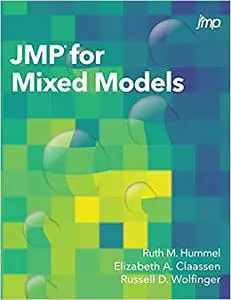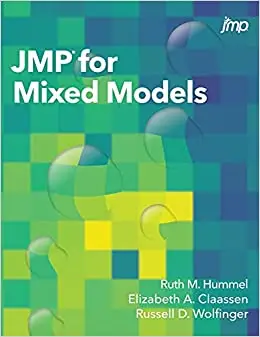Ruth Hummel, Elizabeth a Claassen, Russell D Wolfinger, "JMP for Mixed Models"
English | 2021 | ISBN: 1951684028, 195236521X | 262 pages | EPUB | 26 MB
English | 2021 | ISBN: 1951684028, 195236521X | 262 pages | EPUB | 26 MB
Discover the power of mixed models with JMP and JMP Pro.
Mixed models are now the mainstream method of choice for analyzing experimental data. Why? They are arguably the most straightforward and powerful way to handle correlated observations in designed experiments. Reaching well beyond standard linear models, mixed models enable you to make accurate and precise inferences about your experiments and to gain deeper understanding of sources of signal and noise in the system under study. Well-formed fixed and random effects generalize well and help you make the best data-driven decisions.
JMP for Mixed Models brings together two of the strongest traditions in SAS software: mixed models and JMP. JMP's groundbreaking philosophy of tight integration of statistics with dynamic graphics is an ideal milieu within which to learn and apply mixed models, also known as hierarchical linear or multilevel models. If you are a scientist or engineer, the methods described herein can revolutionize how you analyze experimental data without the need to write code.
Inside you'll find a rich collection of examples and a step-by-step approach to mixed model mastery. Topics include:
Learning how to appropriately recognize, set up, and interpret fixed and random effects
Extending analysis of variance (ANOVA) and linear regression to numerous mixed model designs
Understanding how degrees of freedom work using Skeleton ANOVA
Analyzing randomized block, split-plot, longitudinal, and repeated measures designs
Introducing more advanced methods such as spatial covariance and generalized linear mixed models
Simulating mixed models to assess power and other important sampling characteristics
Providing a solid framework for understanding statistical modeling in general
Improving perspective on modern dilemmas around Bayesian methods, p-values, and causal inference



